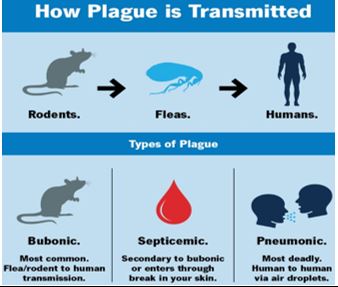

Context
In a recent incident, health officials in Oregon, US confirmed the first case of bubonic plague in the state since 2005.
What is the bubonic plague?
- Bubonic plague specifically refers to cases where bacteria gets into the lymph nodes.
- Caused by: Yersinia pestis, a zoonotic bacteria, i.e. bacteria that can spread between animals and people. Y pestisis usually found in small animals and their fleas.
|
Between 1346 and 1353, the bubonic plague killed as many as 50 million in Europe in what is known as the Black Death. |
- Transmission: Humans can be infected in one of three ways —
- the bite of infected vector fleas
- unprotected contact with infectious bodily fluids or contaminated materials
- inhalation of respiratory droplets/small particles from a patient with pneumonic plague
- Symptoms: It can cause fever, headache, weakness and painful, swollen lymph nodes, and usually happens from the bite of an infected flea.
|
Other Types of Plague |
|
|
Septicemic plague |
Pneumonic plague |
|
|



